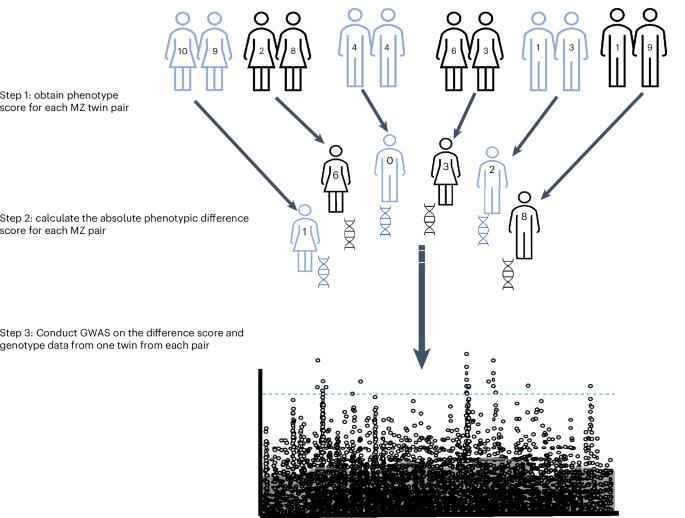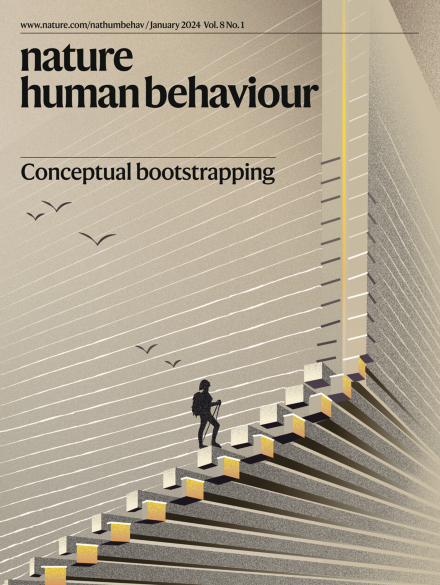Genetics of monozygotic twins reveals the impact of environmental sensitivity on psychiatric and neurodevelopmental phenotypes
IF 15.9
1区 心理学
Q1 MULTIDISCIPLINARY SCIENCES
引用次数: 0
Abstract
Individual sensitivity to environmental exposures may be genetically influenced. This genotype-by-environment interplay implies differences in phenotypic variance across genotypes, but these variants have proven challenging to detect. Genome-wide association studies of monozygotic twin differences are conducted through family-based variance analyses, which are more robust to the systemic biases that impact population-based methods. We combined data from 21,792 monozygotic twins (10,896 pairs) from 11 studies to conduct one of the largest genome-wide association study meta-analyses of monozygotic phenotypic differences, in children, adolescents and adults separately, for seven psychiatric and neurodevelopmental phenotypes: attention deficit hyperactivity disorder symptoms, autistic traits, anxiety and depression symptoms, psychotic-like experiences, neuroticism and wellbeing. The proportions of phenotypic variance explained by single-nucleotide polymorphisms in these phenotypes were estimated (h2 = 0–18%), but were imprecise. We identified 13 genome-wide significant associations (single-nucleotide polymorphisms, genes and gene sets), including genes related to stress reactivity for depression, growth factor-related genes for autistic traits and catecholamine uptake-related genes for psychotic-like experiences. This is the largest genetic study of monozygotic twins to date by an order of magnitude, evidencing an alternative method to study the genetic architecture of environmental sensitivity. The statistical power was limited for some analyses, calling for better-powered future studies. This study uncovered genetic associations with environmental sensitivity in psychiatric and neurodevelopmental traits in an international collaboration using data from more than 21,000 monozygotic twins—the largest genetic study of monozygotic twin differences to date.


单卵双胞胎的遗传学揭示了环境敏感性对精神和神经发育表型的影响
个体对环境暴露的敏感性可能受到基因的影响。这种基因型与环境的相互作用意味着不同基因型的表型变异存在差异,但这些变异已被证明具有挑战性。单卵双胞胎差异的全基因组关联研究是通过基于家庭的方差分析进行的,这对影响基于人群的方法的系统偏差更为稳健。我们结合了来自11项研究的21792对同卵双胞胎(10896对)的数据,对儿童、青少年和成人的同卵表型差异进行了最大的全基因组关联研究之一,分析了七种精神和神经发育表型:注意缺陷多动障碍症状、自闭症特征、焦虑和抑郁症状、精神病样经历、神经质和健康。这些表型中单核苷酸多态性解释的表型变异比例被估计(h2 = 0-18%),但不精确。我们确定了13个全基因组显著关联(单核苷酸多态性、基因和基因集),包括抑郁症的应激反应相关基因、自闭症特征的生长因子相关基因和精神病样经历的儿茶酚胺摄取相关基因。这是迄今为止规模最大的单卵双胞胎基因研究,证明了研究环境敏感性遗传结构的另一种方法。一些分析的统计效力有限,需要更好的未来研究。
本文章由计算机程序翻译,如有差异,请以英文原文为准。
求助全文
约1分钟内获得全文
求助全文
来源期刊

Nature Human Behaviour
Psychology-Social Psychology
CiteScore
36.80
自引率
1.00%
发文量
227
期刊介绍:
Nature Human Behaviour is a journal that focuses on publishing research of outstanding significance into any aspect of human behavior.The research can cover various areas such as psychological, biological, and social bases of human behavior.It also includes the study of origins, development, and disorders related to human behavior.The primary aim of the journal is to increase the visibility of research in the field and enhance its societal reach and impact.
 求助内容:
求助内容: 应助结果提醒方式:
应助结果提醒方式:


